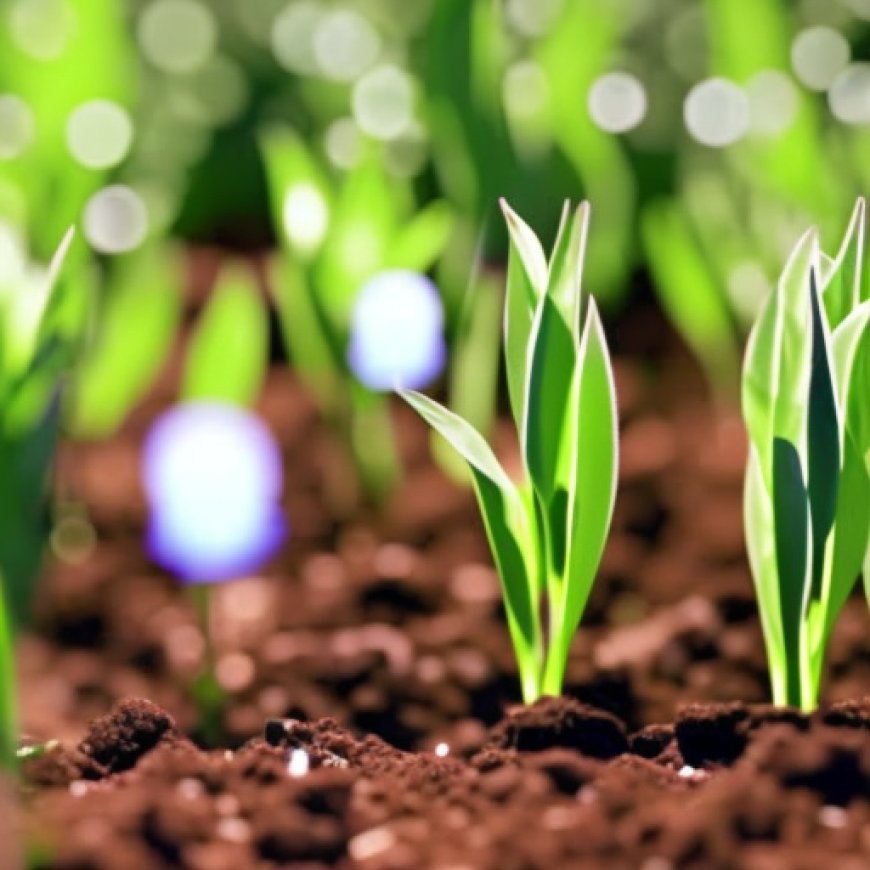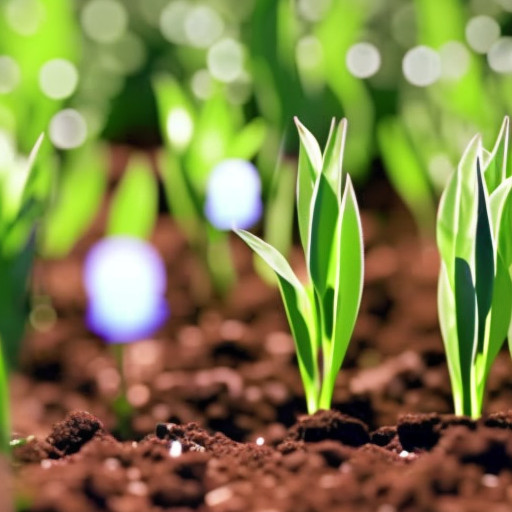PepsiCo and Walmart Team Up For Regenerative Agriculture Initiative
PepsiCo and Walmart Team Up For Regenerative Agriculture Initiative Consumer Goods Technology


PepsiCo and Walmart Partner to Support Sustainable Development Goals

PepsiCo and Walmart have partnered for a new initiative focused on supporting U.S. and Canadian farmers’ pursuit to improve soil health and water quality.
Collaboration for Regenerative Agriculture Practices
The consumer goods company and retailer have formed a seven-year collaboration that seeks $120 million in investments to establish financial, agronomic, and social programs to enable and accelerate the adoption of regenerative agriculture practices on more than 2 million acres of farmland. The collaboration is expected to deliver about 4 million metric tons of greenhouse gas (GHG) emission reductions and removals by 2030.
Benefits and Goals
This collaboration with PepsiCo aims to prioritize the expansion of regenerative agricultural practices among farmers across North America. The goal is to make quality products affordable and accessible for customers while elevating farmer livelihoods, sustainably managing soil health, increasing yields, and creating a model that others can replicate in different product categories. It also encourages additional investments in regenerative agriculture by other brands.
Input from Farmers
The PepsiCo and Walmart collaboration recognizes the diversity of agriculture and the dependence on farmers to grow ingredients for their products. The companies are providing farmers the opportunity to provide input on how sustainability will function in their vast supply chain.
“Farmers know their business better than anyone else, and what we hear from them is that for regenerative agriculture to make business sense, three things need to happen,” said Jim Andrew, Chief Sustainability Officer, PepsiCo, in a statement. “They need economic support, social and cultural support, and agronomic support. This strategic collaboration with Walmart will advance our shared goal to have farmers’ backs as they transform farming in a way that benefits the planet and people.”
PepsiCo’s Commitment to Sustainable Development Goals
The reconstruction of PepsiCo’s food systems aligns with their Pep+ (PepsiCo Positive) goals, which include driving the adoption of regenerative agriculture practices across 7 million acres and reducing absolute GHG emissions by more than 40% across its entire value chain by 2030.
SDGs, Targets, and Indicators
| SDGs | Targets | Indicators |
|---|---|---|
| SDG 2: Zero Hunger | 2.4: By 2030, ensure sustainable food production systems and implement resilient agricultural practices that increase productivity and production, that help maintain ecosystems, that strengthen capacity for adaptation to climate change, extreme weather, drought, flooding and other disasters and that progressively improve land and soil quality. | The adoption of regenerative agriculture practices on more than 2 million acres of farmland. |
| SDG 13: Climate Action | 13.2: Integrate climate change measures into national policies, strategies and planning. | 4 million metric tons of greenhouse gas (GHG) emission reductions and removals by 2030. |
| SDG 15: Life on Land | 15.3: By 2030, combat desertification, restore degraded land and soil, including land affected by desertification, drought and floods, and strive to achieve a land degradation-neutral world. | The adoption of regenerative agriculture practices on more than 2 million acres of farmland. |
| SDG 17: Partnerships for the Goals | 17.16: Enhance the Global Partnership for Sustainable Development, complemented by multi-stakeholder partnerships that mobilize and share knowledge, expertise, technology and financial resources. | The collaboration between PepsiCo and Walmart to establish financial, agronomic, and social programs to enable and accelerate the adoption of regenerative agriculture practices. |
1. Which SDGs are addressed or connected to the issues highlighted in the article?
SDG 2: Zero Hunger
The article discusses PepsiCo and Walmart’s collaboration to support farmers in improving soil health and water quality. This aligns with SDG 2, which aims to ensure sustainable food production systems and resilient agricultural practices.
SDG 13: Climate Action
The collaboration between PepsiCo and Walmart also aims to deliver 4 million metric tons of greenhouse gas (GHG) emission reductions and removals by 2030, contributing to SDG 13’s target of integrating climate change measures into national policies and planning.
SDG 15: Life on Land
The adoption of regenerative agriculture practices on more than 2 million acres of farmland, as mentioned in the article, relates to SDG 15’s target of combatting desertification, restoring degraded land and soil, and achieving a land degradation-neutral world.
SDG 17: Partnerships for the Goals
The collaboration between PepsiCo and Walmart exemplifies SDG 17’s emphasis on partnerships for sustainable development. It involves the establishment of financial, agronomic, and social programs to enable and accelerate the adoption of regenerative agriculture practices.
2. What specific targets under those SDGs can be identified based on the article’s content?
– Target 2.4: By 2030, ensure sustainable food production systems and implement resilient agricultural practices that increase productivity and production, that help maintain ecosystems, that strengthen capacity for adaptation to climate change, extreme weather, drought, flooding and other disasters, and that progressively improve land and soil quality.
– Target 13.2: Integrate climate change measures into national policies, strategies, and planning.
– Target 15.3: By 2030, combat desertification, restore degraded land and soil, including land affected by desertification, drought, and floods, and strive to achieve a land degradation-neutral world.
– Target 17.16: Enhance the Global Partnership for Sustainable Development, complemented by multi-stakeholder partnerships that mobilize and share knowledge, expertise, technology, and financial resources.
3. Are there any indicators mentioned or implied in the article that can be used to measure progress towards the identified targets?
The article mentions two indicators that can be used to measure progress towards the identified targets:
– The adoption of regenerative agriculture practices on more than 2 million acres of farmland can be used as an indicator for targets 2.4 and 15.3.
– The delivery of 4 million metric tons of greenhouse gas (GHG) emission reductions and removals by 2030 can be used as an indicator for target 13.2.
These indicators reflect the specific actions and outcomes mentioned in the article that contribute to the achievement of the identified targets.
4. SDGs, Targets, and Indicators
| SDGs | Targets | Indicators |
|---|---|---|
| SDG 2: Zero Hunger | 2.4: By 2030, ensure sustainable food production systems and implement resilient agricultural practices that increase productivity and production, that help maintain ecosystems, that strengthen capacity for adaptation to climate change, extreme weather, drought, flooding and other disasters and that progressively improve land and soil quality. | The adoption of regenerative agriculture practices on more than 2 million acres of farmland. |
| SDG 13: Climate Action | 13.2: Integrate climate change measures into national policies, strategies and planning. | 4 million metric tons of greenhouse gas (GHG) emission reductions and removals by 2030. |
| SDG 15: Life on Land | 15.3: By 2030, combat desertification, restore degraded land and soil, including land affected by desertification, drought and floods, and strive to achieve a land degradation-neutral world. | The adoption of regenerative agriculture practices on more than 2 million acres of farmland. |
| SDG 17: Partnerships for the Goals | 17.16: Enhance the Global Partnership for Sustainable Development, complemented by multi-stakeholder partnerships that mobilize and share knowledge, expertise, technology and financial resources. | The collaboration between PepsiCo and Walmart to establish financial, agronomic, and social programs to enable and accelerate the adoption of regenerative agriculture practices. |
Behold! This splendid article springs forth from the wellspring of knowledge, shaped by a wondrous proprietary AI technology that delved into a vast ocean of data, illuminating the path towards the Sustainable Development Goals. Remember that all rights are reserved by SDG Investors LLC, empowering us to champion progress together.
Source: consumergoods.com

Join us, as fellow seekers of change, on a transformative journey at https://sdgtalks.ai/welcome, where you can become a member and actively contribute to shaping a brighter future.







